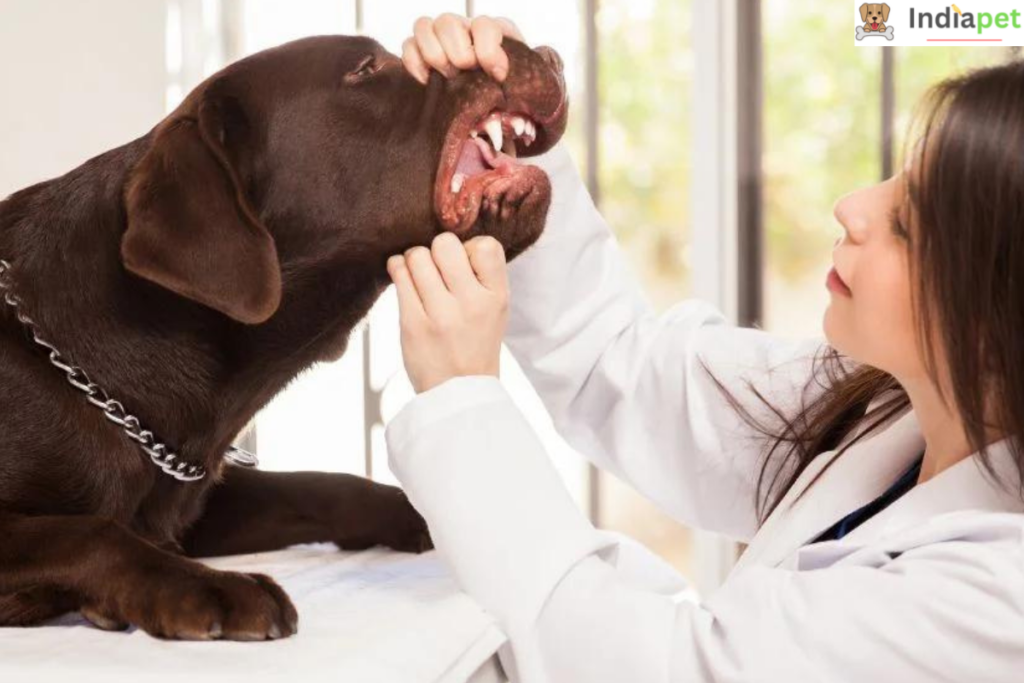Introduction
How Many Teeth Do Dogs Have? Learn How To Care For Them – Dogs, like humans, require regular dental care to maintain their overall health and well-being. Understanding the dental anatomy of dogs, the number of teeth they have, and how to care for them can help ensure your furry friend stays happy and healthy. In this comprehensive guide, we’ll explore the intricacies of canine dental care, from the number of teeth in different dog breeds to recognizing signs of dental problems and providing effective care.

Anatomy of a Dog’s Mouth
To comprehend the dental structure of dogs, it is essential to understand the types of teeth found in their mouth. Dogs have four different types of teeth: incisors, canines, premolars, and molars. Each type serves a specific purpose in the chewing process.

- Incisors: Small, sharp teeth located in the front of the mouth, primarily used for nibbling and grooming.
- Canines: Often referred to as “fangs,” these are the long, pointed teeth on either side of the incisors. They aid in holding and tearing food.
- Premolars: Located behind the canines, these teeth are used for shearing and cutting food.
- Molars: Found toward the back of the mouth, responsible for grinding and crushing food.
The dental formula of dogs provides a standardized way to describe the number and types of teeth. An adult dog’s dental formula is typically written as:
- 2 (I 3/3 C 1/1 P 4/4 M 2/3) = 42 teeth
Also Read : Why do dogs Eat Grass? Causes & Prevention
________________________________________________________________________________________
Number of Teeth in Different Dog Breeds
All adult dogs typically have 42 teeth, regardless of their breed. These are divided into incisors, canines, premolars, and molars:
- Incisors: 12 total (6 on the top, 6 on the bottom)
- Canines: 4 total (2 on the top, 2 on the bottom)
- Premolars: 16 total (8 on the top, 8 on the bottom)
- Molars: 10 total (4 on the top, 6 on the bottom)
Puppies, on the other hand, have 28 deciduous (baby) teeth that they eventually lose as they grow older. While the number of teeth remains consistent across breeds, the size and shape of these teeth can vary, particularly in breeds with unique skull structures, like Bulldogs or Greyhounds.
Also Read : What to Feed your Dog in Winters
________________________________________________________________________________________
The Importance of Caring for a Dog’s Teeth
Good dental hygiene is crucial for a dog’s overall health. Poor dental care can lead to:

- Periodontal Disease: An infection of the tissues surrounding the teeth.
- Tooth Loss: Resulting from untreated periodontal disease.
- Pain and Discomfort: Dental issues can cause significant pain, affecting your dog’s ability to eat and enjoy life.
- Systemic Health Problems: Bacteria from dental infections can enter the bloodstream and affect the heart, liver, and kidneys.
Also Read : What to Feed Your Dog in Summers?
________________________________________________________________________________________
How to Care for a Dog’s Teeth
Regular Brushing

- Frequency: Aim to brush your dog’s teeth at least 2-3 times per week, if not daily.
- Tools: Use a toothbrush designed for dogs and canine toothpaste. Human toothpaste can be harmful to dogs.
Professional Cleanings
- Frequency: Schedule professional dental cleanings with your veterinarian annually or as recommended.
- Benefits: Professional cleanings remove tartar and plaque buildup that can’t be managed by brushing alone.
Also Read : Why do dogs lick their humans feet?
________________________________________________________________________________________
Dental Chews and Toys

- Purpose: These can help reduce plaque and tartar buildup.
- Selection: Choose products approved by the Veterinary Oral Health Council (VOHC).
________________________________________________________________________________________
Diet
- Impact: A balanced diet can promote dental health.
- Dental Diets: Some dog foods are formulated to reduce tartar buildup.
________________________________________________________________________________________
Signs of Dental Problems in Dogs
Recognizing dental problems early can prevent serious health issues. Look out for:
- Bad Breath: Persistent bad breath can indicate dental disease.
- Inflamed Gums: Red, swollen, or bleeding gums are a sign of periodontal disease.
- Difficulty Eating: Reluctance to eat or chew may indicate dental pain.
- Loose or Missing Teeth: These are clear signs of advanced dental issues.
- Pawing at the Mouth: This behavior can indicate discomfort or pain in the mouth.
Also Read : Train a Rottweiler: Stop Bites and Make Them Well-Behaved
________________________________________________________________________________________
Common Dental Issues in Dogs
- Gingivitis: Inflammation of the gums caused by plaque buildup.
- Periodontitis: A severe gum infection that damages the soft tissue and bone supporting the teeth.
- Tooth Fractures: Common in dogs that chew hard objects.
- Abscesses: Pockets of pus caused by bacterial infections, often at the tooth root.
- Oral Tumors: Abnormal growths that can be benign or malignant.
________________________________________________________________________________________
How Many Teeth Do Dogs Have? Learn How To Care For Them
Conclusion
Caring for your dog’s teeth is essential for their overall health and happiness. By understanding the dental anatomy of dogs, recognizing the importance of dental care, and being proactive in maintaining their dental hygiene, you can ensure your furry companion leads a long, healthy life. Regular brushing, professional cleanings, and being vigilant about signs of dental problems are key components of good canine dental care.
________________________________________________________________________________________
Frequently Asked Questions
1. How often should I brush my dog’s teeth?
You should aim to brush your dog’s teeth at least 2-3 times per week, but daily brushing is ideal for optimal dental health.
2. Can I use human toothpaste for my dog?
No, human toothpaste contains ingredients that can be harmful to dogs. Always use toothpaste formulated specifically for dogs.
3. What should I do if my dog loses a tooth?
If your dog loses a tooth, consult your veterinarian. It could be a sign of dental disease or injury that requires professional attention.
4. Are certain dog breeds more prone to dental problems?
Yes, smaller breeds and brachycephalic breeds (like Bulldogs and Pugs) are more prone to dental issues due to the structure of their mouths.
5. Can dental issues in dogs lead to other health problems?
Yes, untreated dental issues can lead to systemic health problems, including heart, liver, and kidney disease, as bacteria from the mouth can enter the bloodstream and affect these organs.


